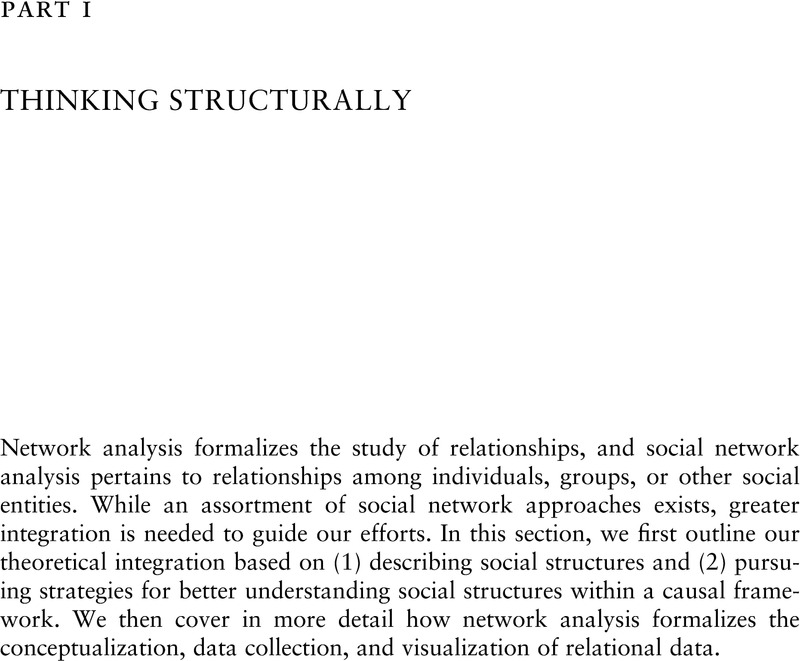Published online by Cambridge University Press: 21 September 2023

General Theoretical Formulations. The theoretical foundations of social network analysis are deep, and we cannot hope to cover all pieces here. Rather, we want to highlight a handful of key pieces that have helped shape how we view the field.
Illustrative Empirical Works. Social network analysis is characterized by a tight linkage between theory and method, as researchers develop tools to solve empirical questions. As such, some of the best general network theory has been developed in the context of empirical investigations.
In addition to the general methods texts listed for Chapter 1, useful deep dives into methods discussed here include:
We encourage readers to explore early issues of the journal Sociometry, which includes stunning work, all done by hand.
To save this book to your Kindle, first ensure [email protected] is added to your Approved Personal Document E-mail List under your Personal Document Settings on the Manage Your Content and Devices page of your Amazon account. Then enter the ‘name’ part of your Kindle email address below. Find out more about saving to your Kindle.
Note you can select to save to either the @free.kindle.com or @kindle.com variations. ‘@free.kindle.com’ emails are free but can only be saved to your device when it is connected to wi-fi. ‘@kindle.com’ emails can be delivered even when you are not connected to wi-fi, but note that service fees apply.
Find out more about the Kindle Personal Document Service.
To save content items to your account, please confirm that you agree to abide by our usage policies. If this is the first time you use this feature, you will be asked to authorise Cambridge Core to connect with your account. Find out more about saving content to Dropbox.
To save content items to your account, please confirm that you agree to abide by our usage policies. If this is the first time you use this feature, you will be asked to authorise Cambridge Core to connect with your account. Find out more about saving content to Google Drive.